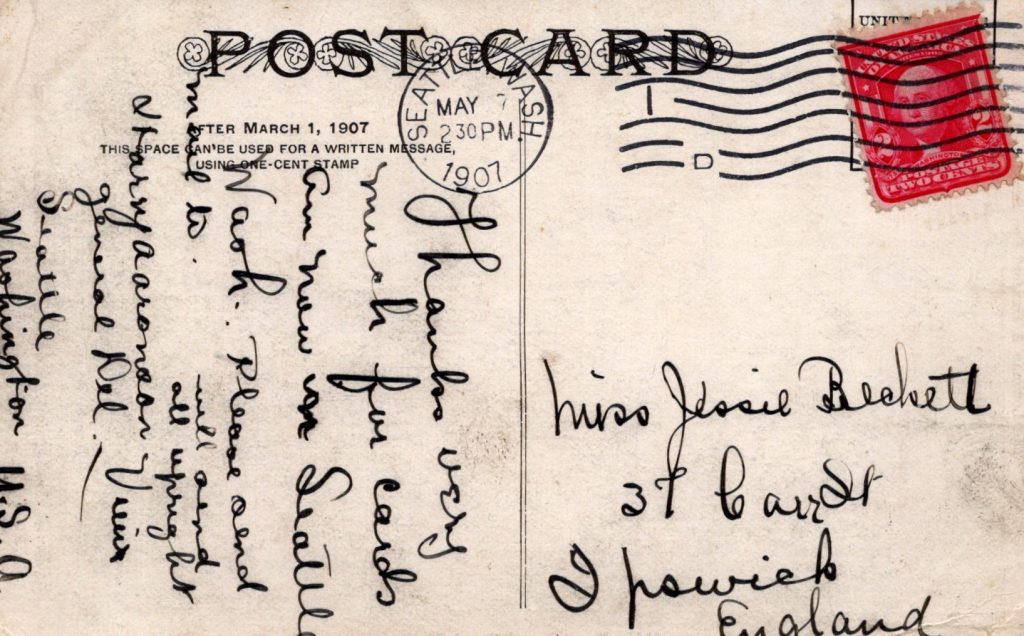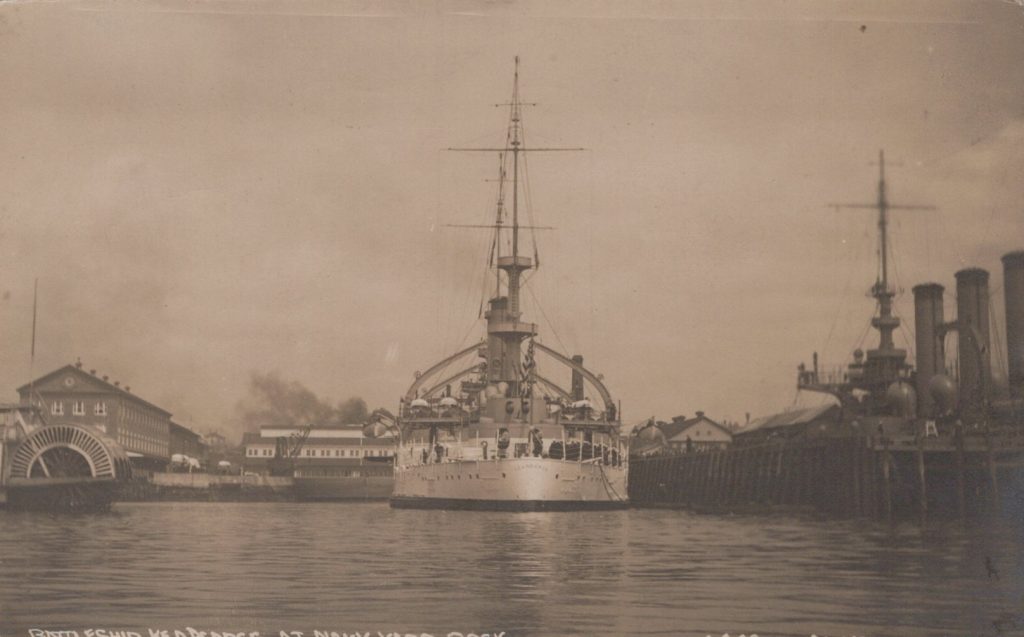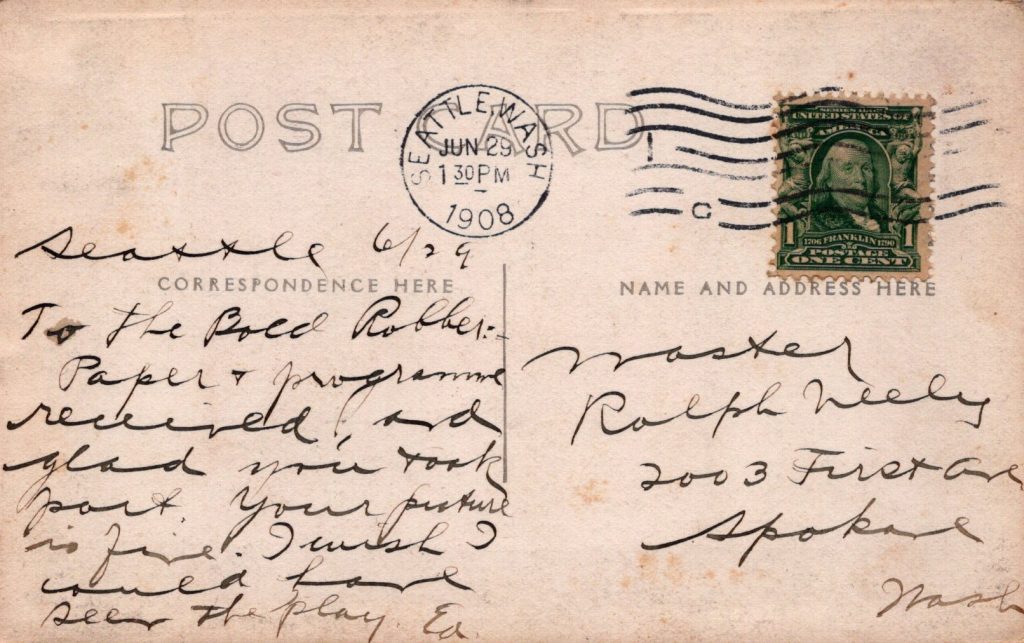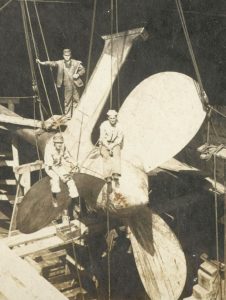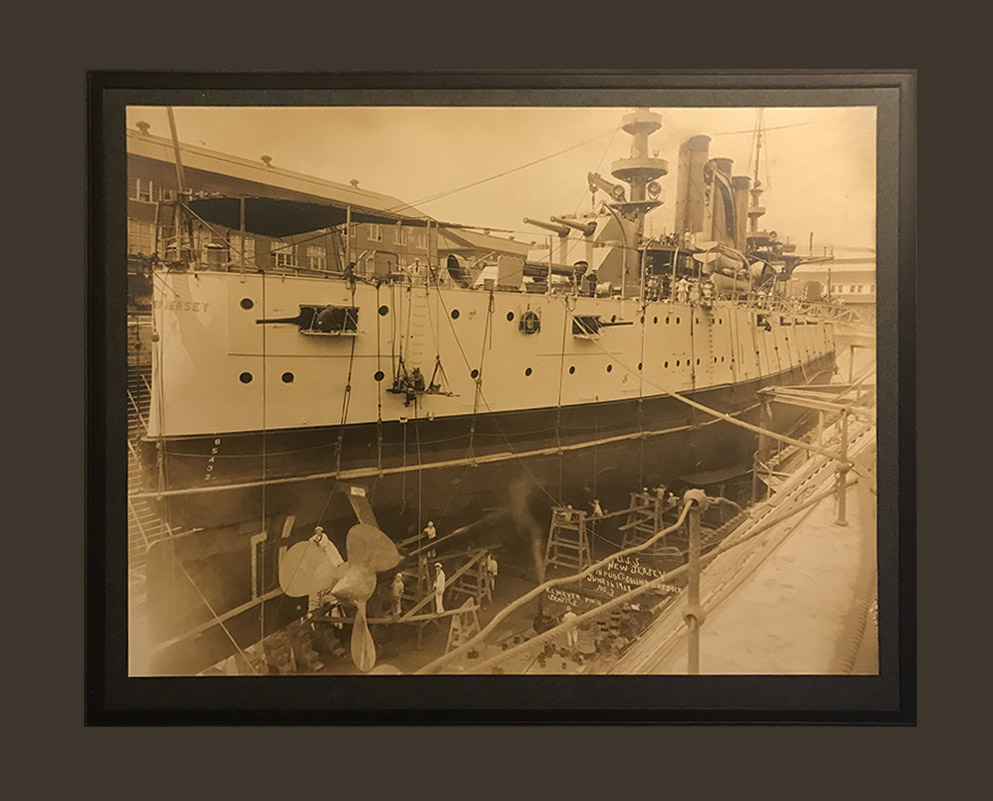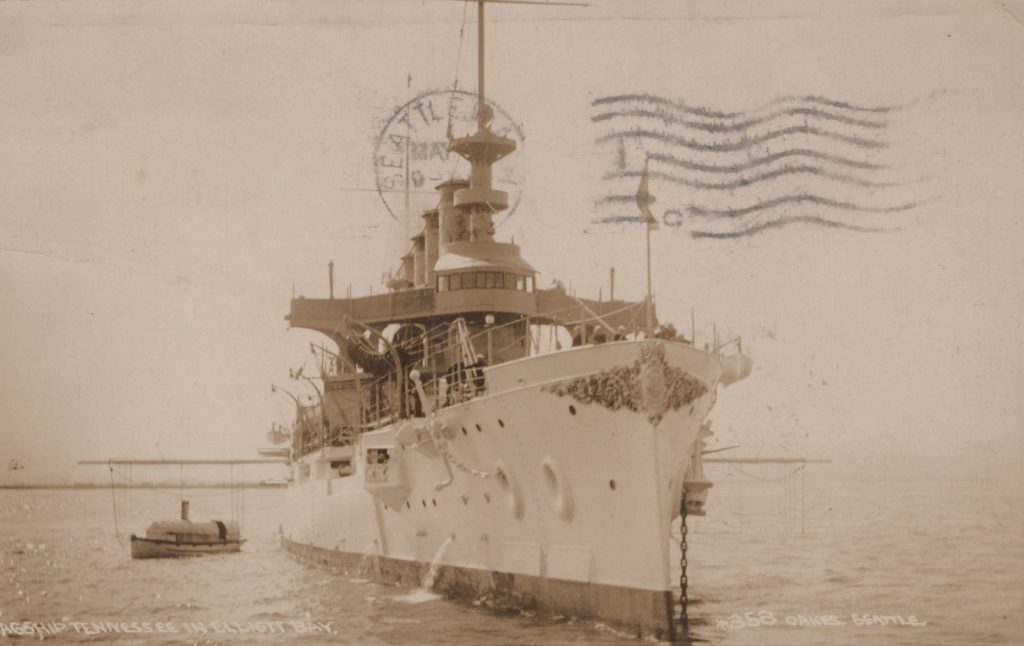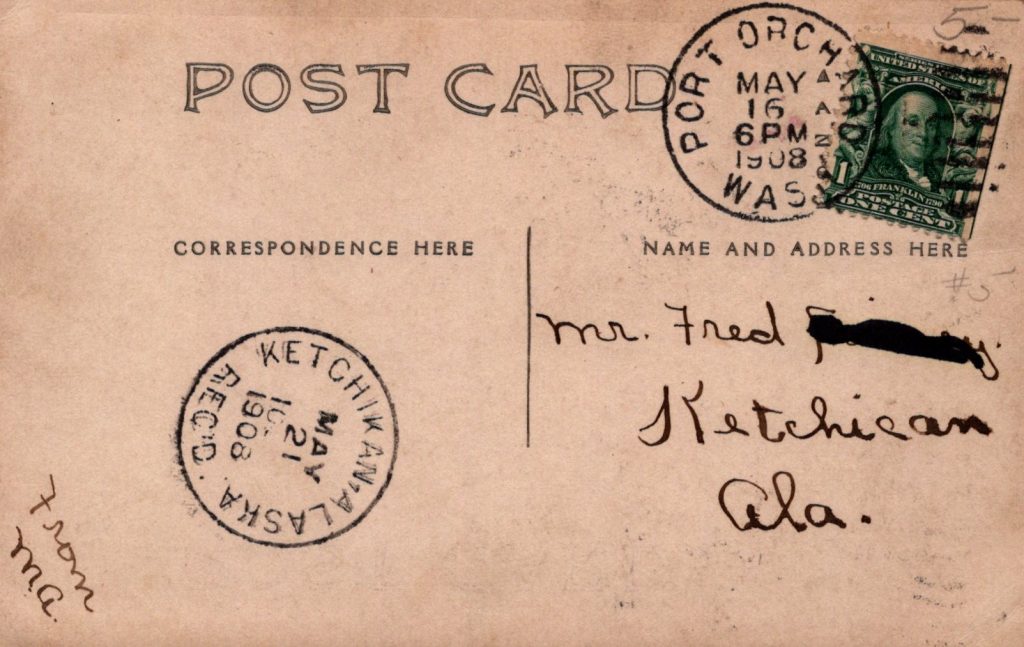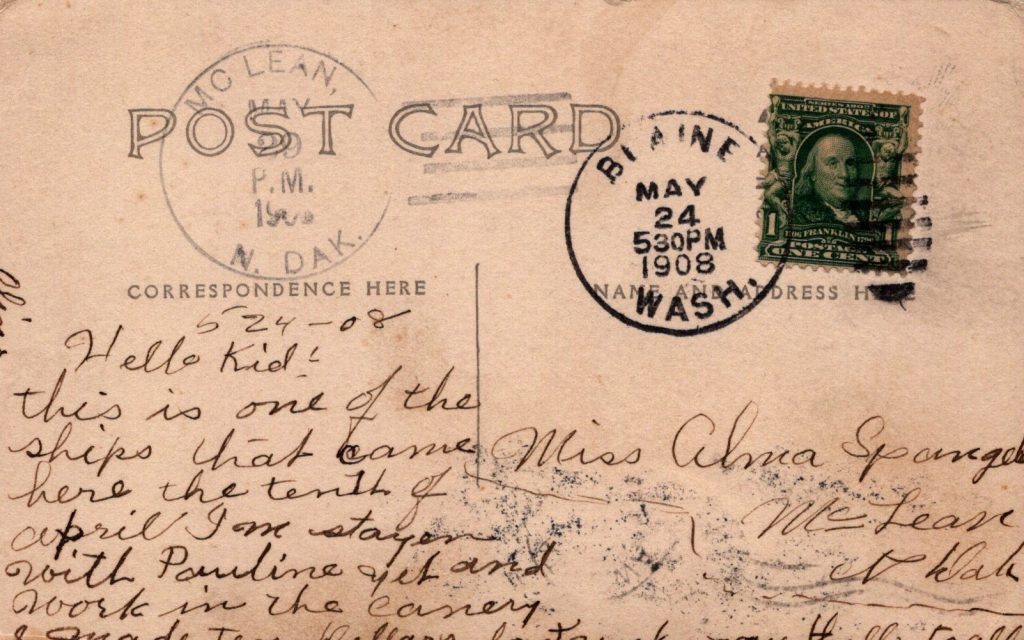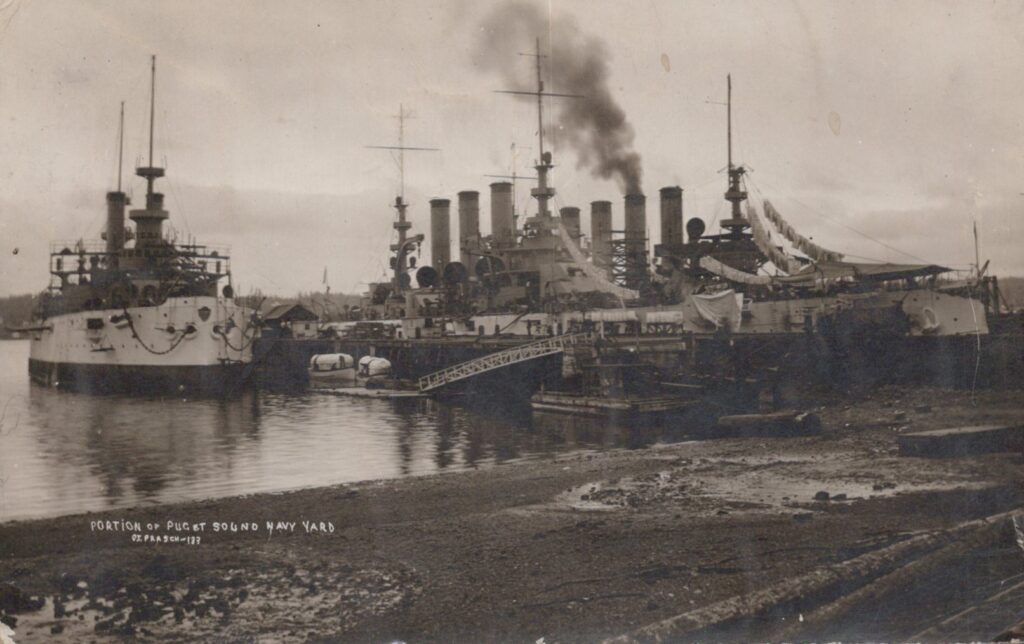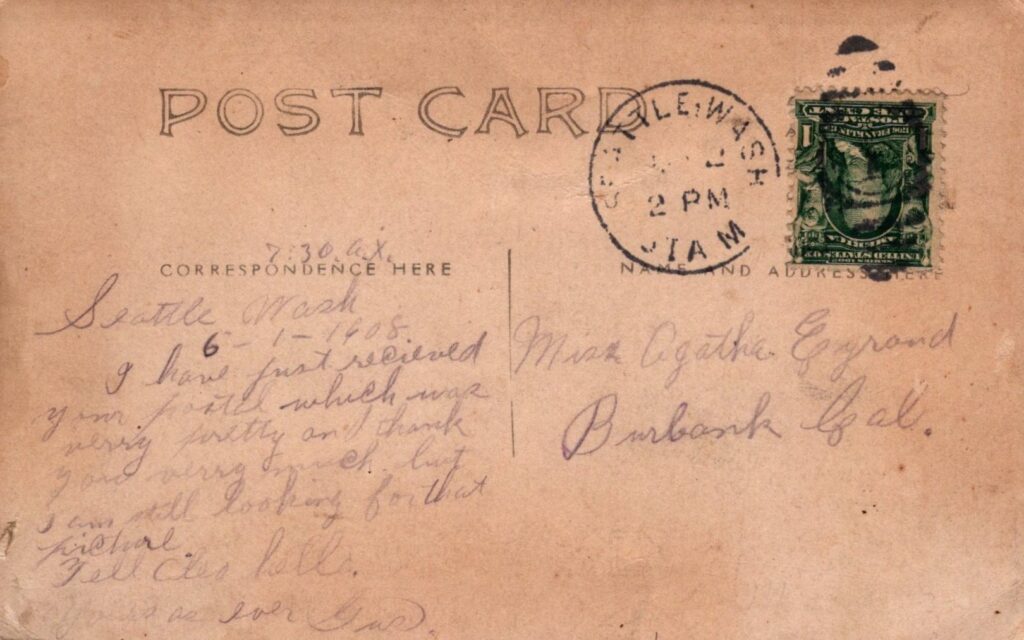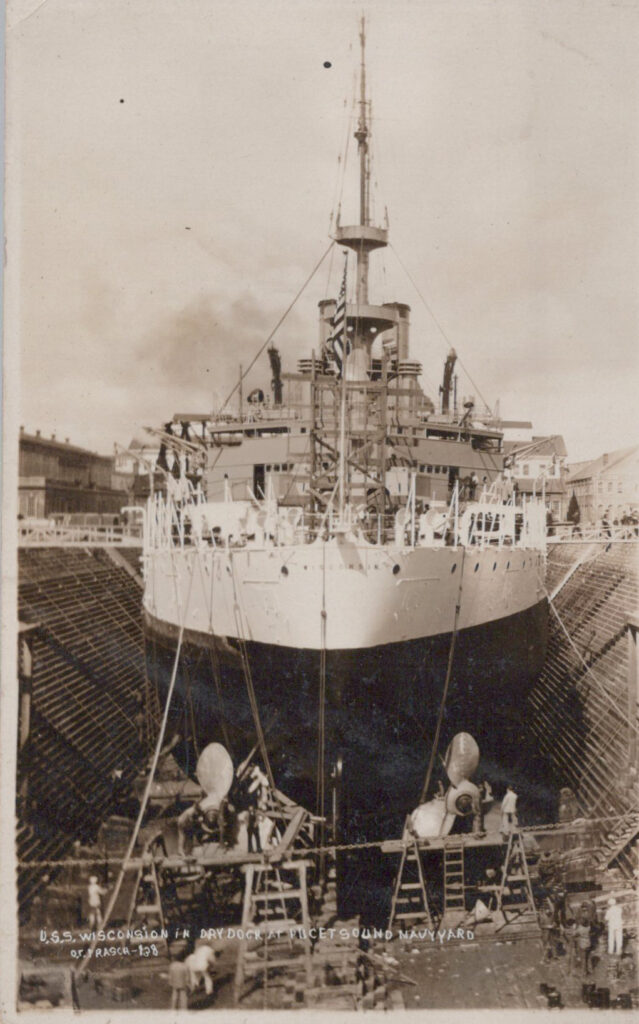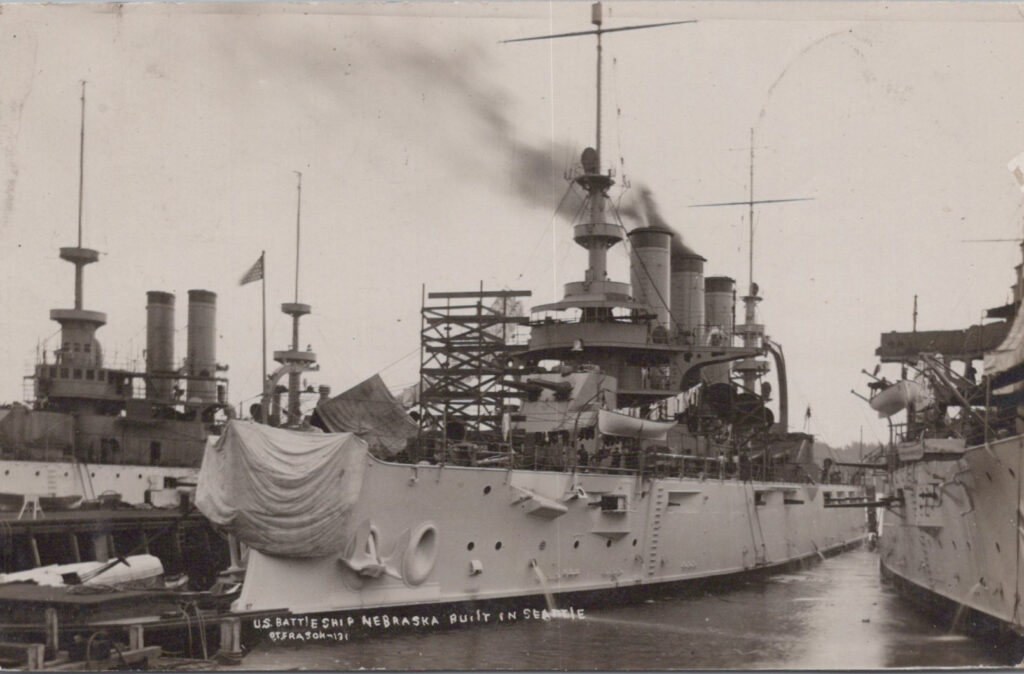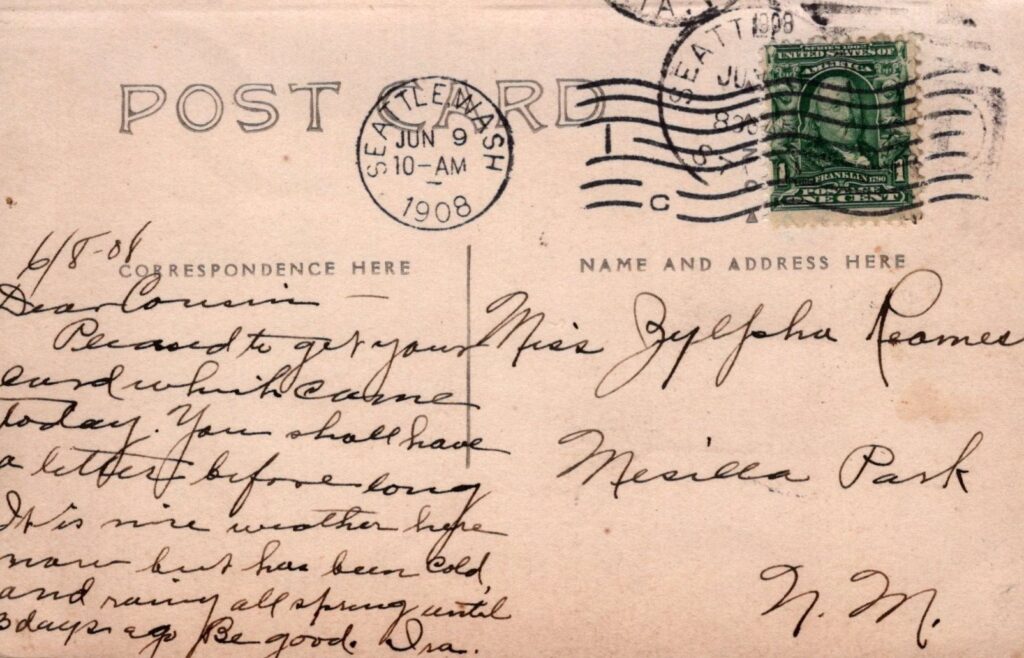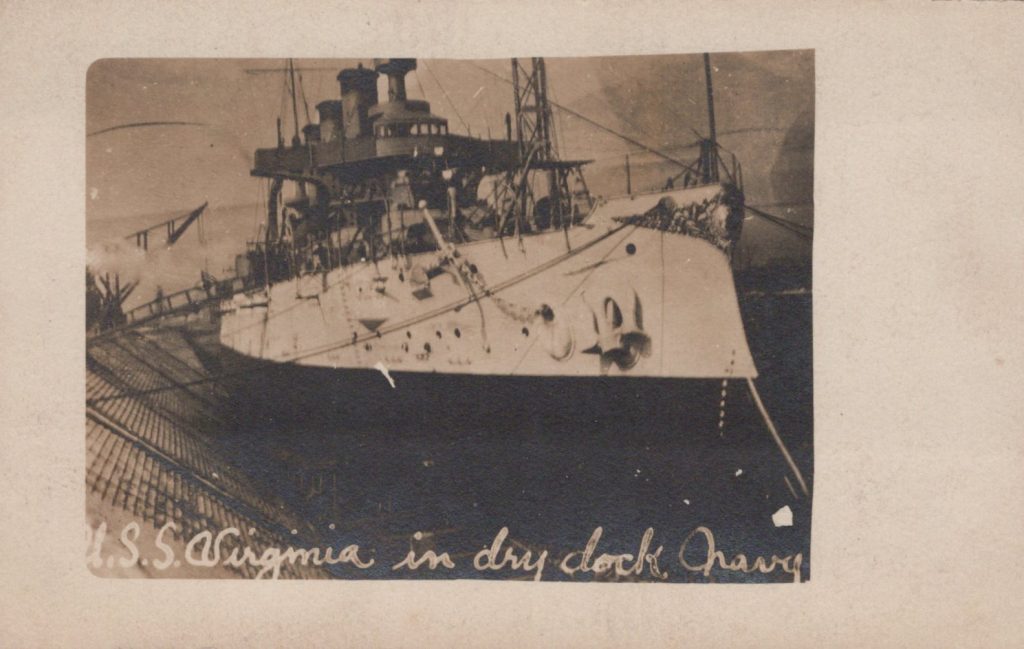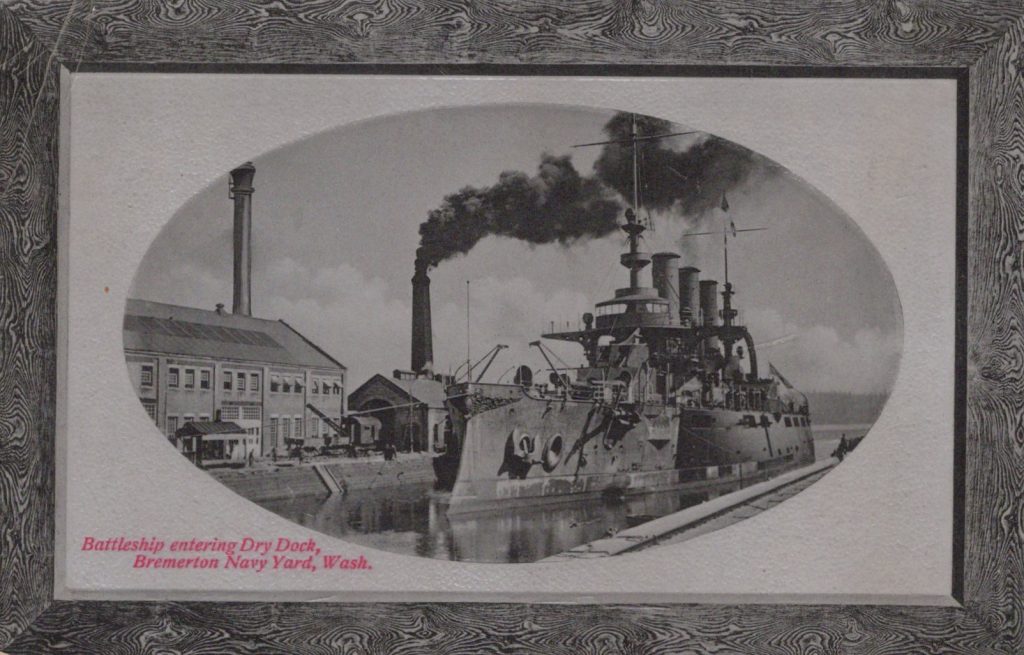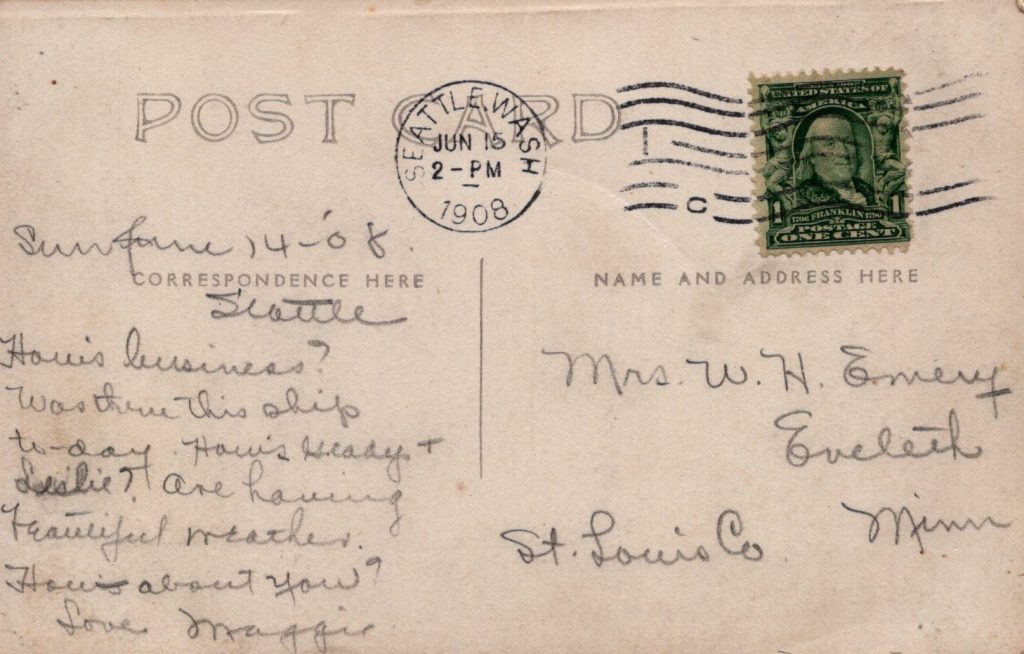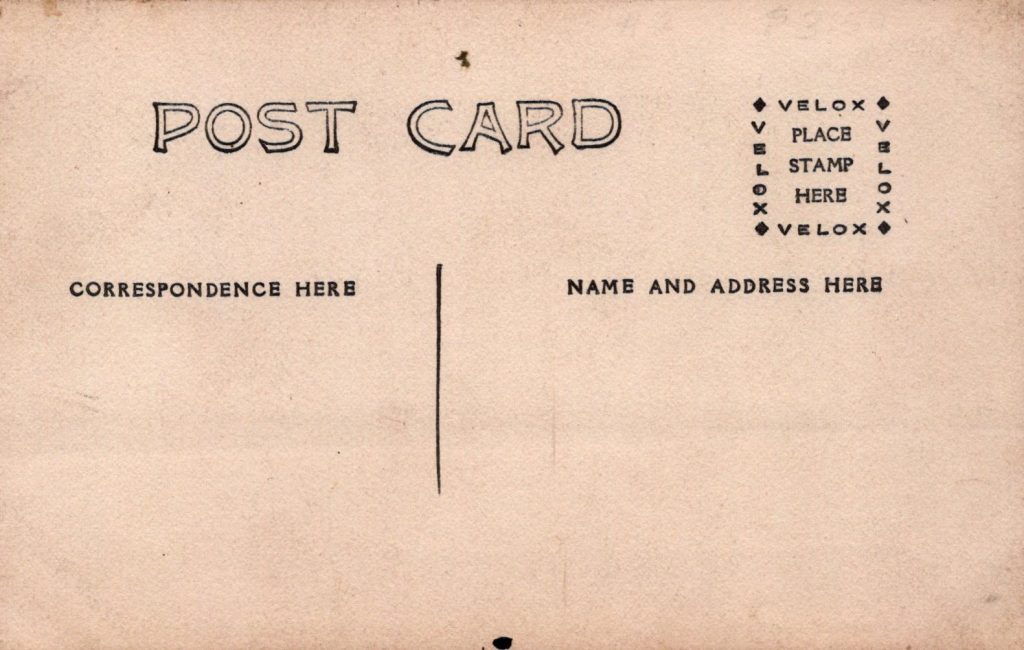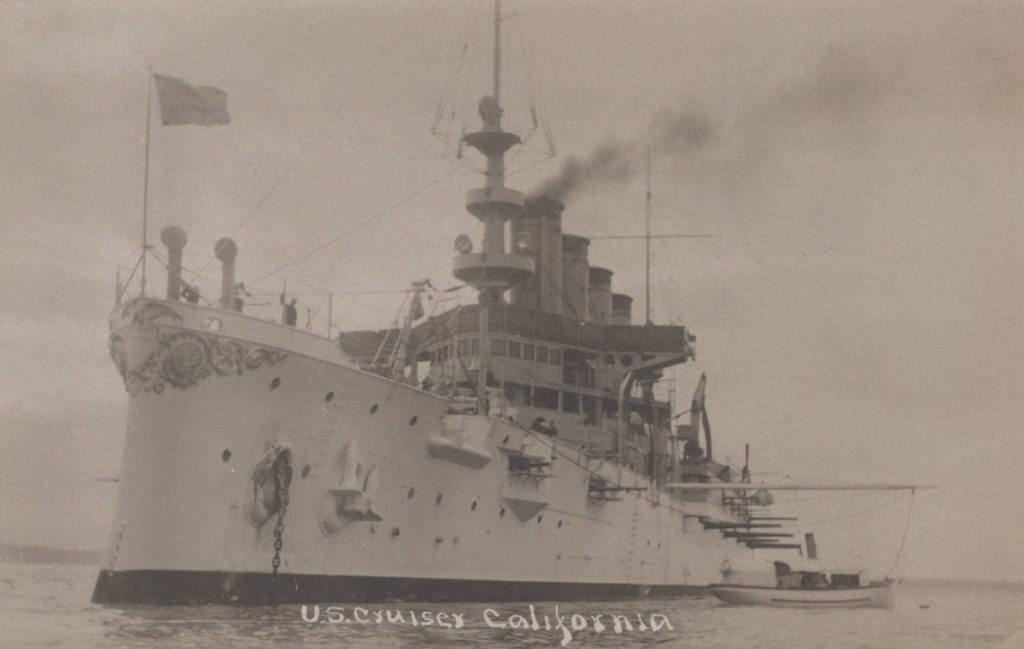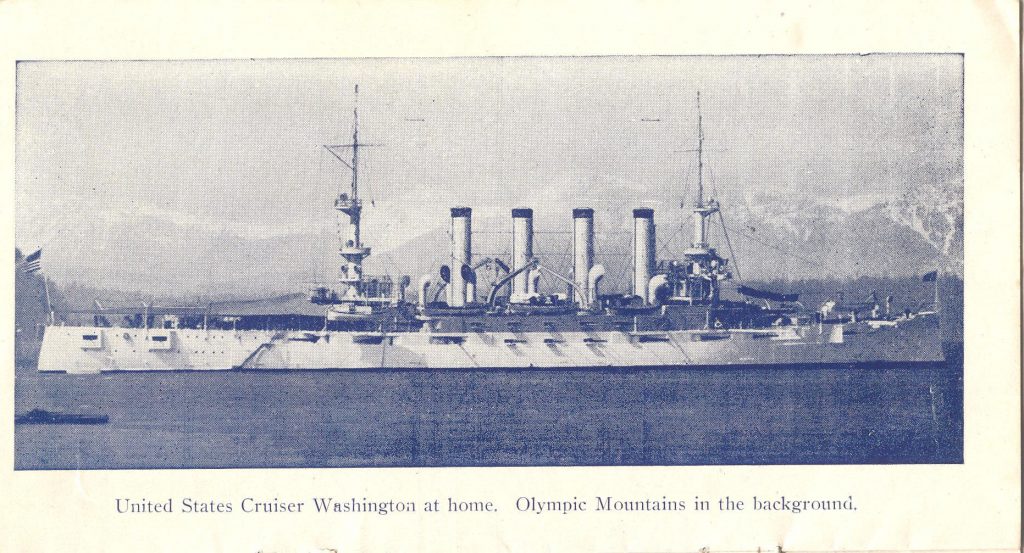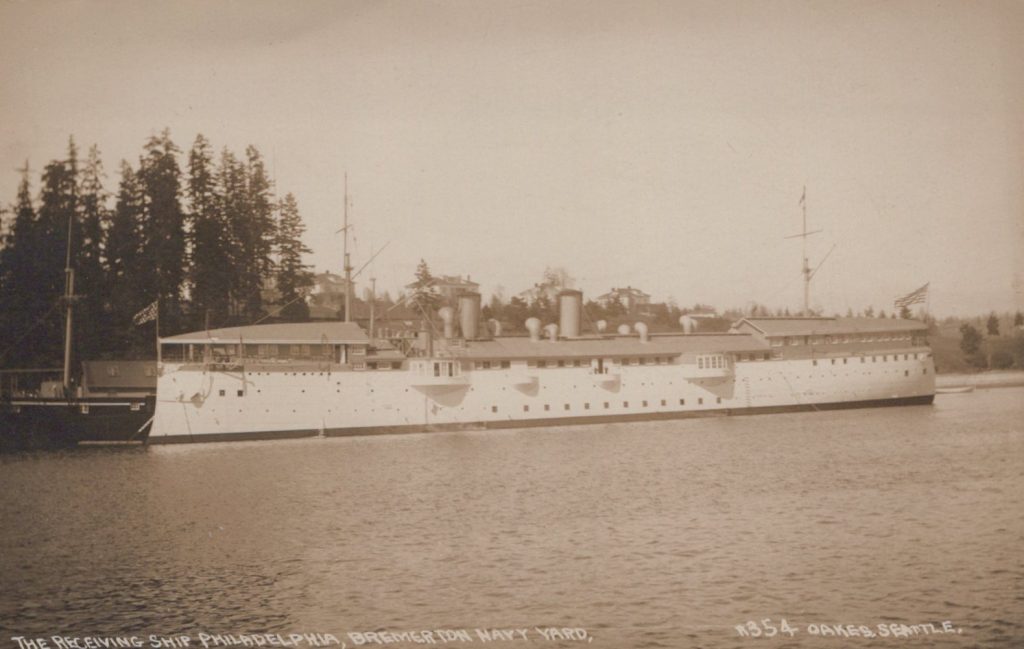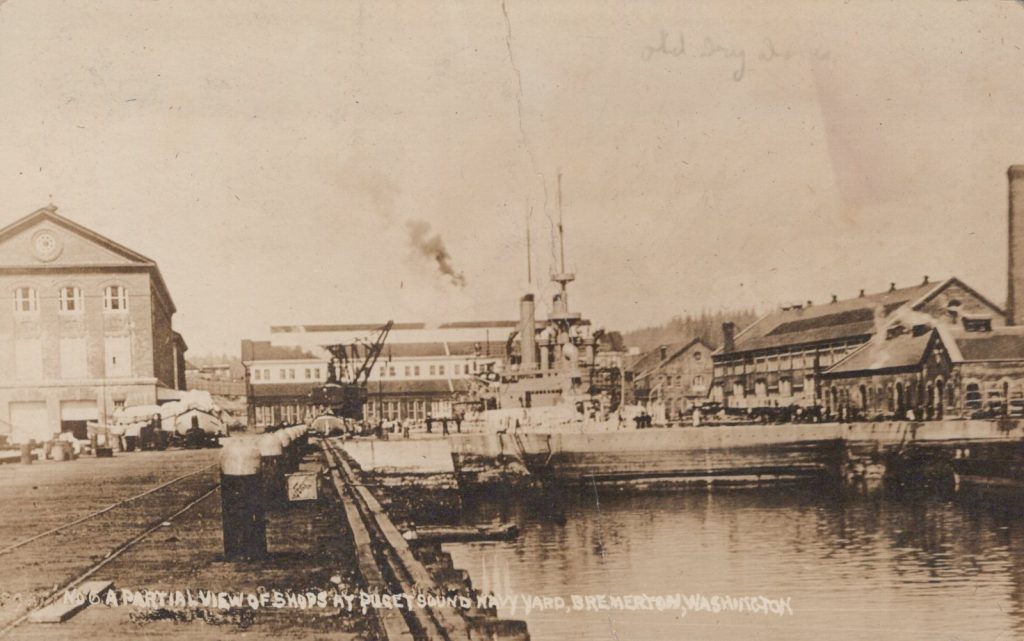Apologies, but no results were found for the requested archive. Perhaps searching will help find a related post.
The trip to the Northwest was important for the fleet. Bremerton Naval Shipyard was the second drydock facility on the Westcoast and the fleet was able to take turns getting prepared for the long journey ahead. Battleships were at the shipyard from May 21st until June 28th including Illinois, Kentucky, Kearsarge, Georgia, Wisconsin, Ohio, Missouri, Virginia, Nebraska, Rhode Island, and New Jersey.
The Northwest
a bargain at any price
The Bremerton Naval Shipyard was the only place for ship repair north of San Francisco's Mare Island Navy Yard when it was established in 1891. It was originally surveyed by Lt Ambrose Barkley Wycoff, commanding the schooner Yukon reporting mild climate, timber, iron ore, and coal in the area. He began promoting Puget Sound as the place best suited for a naval shipyard and the area between Sinclair Inlet and Dyes inlet on Puget Sound was the most suitable location. Congress appropriated funds and Wyckoff went to work purchasing 200 acres of land from two business leaders who had purchased up the land in anticipation of the Navy's purchase. William Bremer and Henry Hensel had seen a golden opportunity and purchased property that they sold back to the navy at greatly inflated prices. "Bremerton" was born and Wyckoff was the first commander. By 1903 there were more than 1,000 workers at the fcility, a wireless radio station and by 1911 a hospital at the yard.
As the fleet arrived in Puget Sound the shipyard started in on each ship needing repair. The Nebraska, Kentucky, and Wisconsin went directly to the facility and rejoined the fleet as it came to Seattle.
At left is a real photo postcard of the USS Kearsarge during her stay at Bremerton. The card is postmarked June 29, 1908. Kearsarge was at the facility from May 27th to June 28th, one of the longest stays of any of the battleships.
Edward l. meyer - cabinet photograph
This is a photograph of the USS Georgia on June 9th, 1908 while in drydock at Bremerton Naval Shipyard. It is mounted on heavy card stock with the image being 10" x 7" and the overall card 14" x 9." The high resolution of the images allows close examination of workers sitting on the propeller screw.
Edward L. Meyer was not a well known photographer in the Northwest. He had a studio in Nanaimo in 1904, Walla Walla in 1905, and also had a studio in Seattle at various times and locations. In 1900 he documented the construction of the White Pass and Yukon Railroad.
This photograph might have been a commissioned piece completed for the shipyard. For the size and quality it was intended to be framed and mounted on the wall. This was possibly purchased by one of the shipyard workers or supervisors. Below the Georgia starboard aft and the New Jersey.
These two photographs were taken by another Northwest photographer, M. L. Oaks from Yakima, Washington. His studio was located in Seattle and he is best know for his exaggerated or "tall tale" postcards. Ships that came up to Puget Sound came for the shipyard. These two photographs of California and Tennessee are examples.
OTTO T. FRASCH, PHOTOGRAPHER
Otto was born in Wisconsin, his family moved to Minnesota where his parents died and Otto and his brother were put in an orphanage. His work is first recorded in Bellingham assisting at the newspaper. Most of his work was found between 1907 and 1915. His photographs were numbered and his fleet photographs include 18-cards which I have a few that are organized between the pages of the Northwest. There is a website devoted to his work and has additional photographs: HTTPS://WWW.OTFRASCH.COM/FRAMES600/GREAT_WHITE_FLEET_SEARCH.HTML
uss virginia
The USS Virginia was at the shipyard from May 31st to June 28th. With ferries operating around Puget Sound, sailors were able to leave the shipyard city and return to Seattle or take excursions to the Olympic mountains.
The cruisers Pennsylvania and California visiting Puget Sound. There photographs where sold during the visit of the battleships and were made by local photographers. The Pennsylvania photographer, Otto. T. Frasch, no. 134 at Puget Sound Navy Yard. The card to the right is the Cruiser California by an unknown photographer.
The Battle Ship Fleet of the Unites States Navy: The fleet's famous cruise around the world
This booklet is 38 pages of pictures of the Battle Ship fleet in 1908. It is particularly weighted to the northwest with two pictures of the USS Nebraska, two of the USS Olympia, one of USS Washington and one of the receiving ship Philadelphia. The book was published by Ward & Company of Bremerton, Washington and the opening plate is of the Puget Sound Navy Yard at Bremerton.
teddy
Homeported at Bremerton Naval Shipyard was the receiving ship USS Philadelphia, nicknamed "Teddy." A receiving ship was a "hotel" for sailors in transit. If a sailor arrived while his ship was at sea, he would check in at the receiving ship for billeting. Philadelphia was also used to displaces crewmen while repairs were being completed on their ship. Many times while a ship was in the drydock, the galley and berthing where not available to the crew. Philadelphia was available for just such occasions.
Well past her active years as a cruiser, Philadelphia's history of naval conquest is limited. Probably the biggest event in her pre-receiving ship history involved her action in the Somoan Islands in 1899. In March of that year, she steamed to the Islands to help put down an uprising. The combined landing party from Britian, Germany, and America were ambused by Chief Mataafa's men and sustained losses of seven men, ikncluding two American Officers and two bluejackets. She remained in the Samoan Islands for another two months before returning to Hawaii.
drydock no. 1
This drydock was the first major structure of the facility to be constructed when the property was purchased. Designed in Washington D.C. by the Navy's Bureau of Docks and Yards, Byron, Barlow and Company of Tacoma, was awarded the contract to build the dock in 1892.
Construction of the dock took more than 3-years and was completed on April 22, 1896. It is 650 feet long, 130 feet wide and 39 feet deep. The first naval vessel to use the drydock was the monitor USS Monterey. The first Battleship, the USS Oregon on April 11, 1897.

